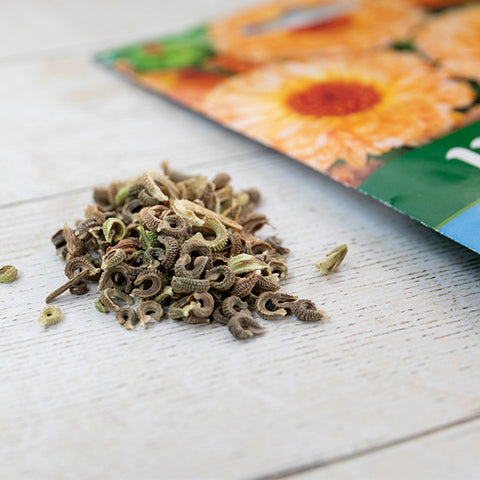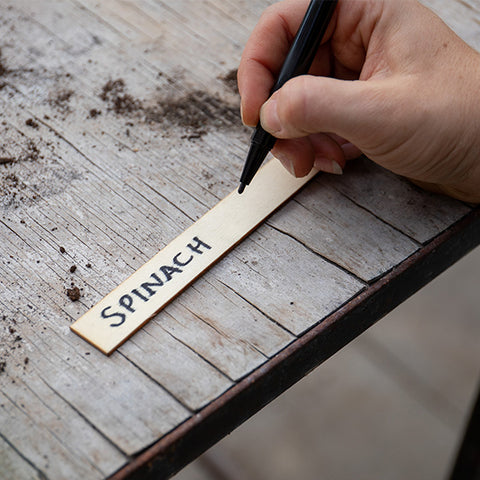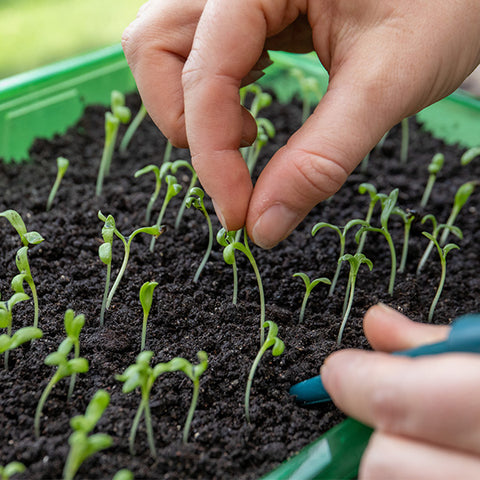Sowing seeds is one of the great pleasures of gardening. Raising plants from scratch and watching your seedlings fulfil their potential is an efficient and cost-effective way to grow. For many garden plants, including a wide range of colourful annuals, as well as many of our favourite vegetables, seed is sown in spring, but there are many plants that are sown at different times, so with a bit of planning, you can sow seeds all year long!

What you need to start
- John Innes Seed Sowing Compost or Gro-Sure Seed and Cutting compost
- Seed trays or pots
- Ruler or an item with a flat edge
- Watering can
- Tray cover/ transparent plastic bag
- Your choice of seeds
Getting Started
Begin with a clean seed tray (there are different sorts) and the easiest to use are often those divided into separate cells or modules. If you have a small amount of seed you can also use a shallow pot.

Fill the tray or pot with seed sowing compost, multipurpose will sometimes do for larger seeds. You can use a ruler to skim the top, removing excess compost for a level surface. Ensure even-filling and firm the compost down very lightly; you can use the base of another seed tray to do this.
Water the compost using a can with a fine rose, and let it drain.
How to Sow
Sow your seeds thinly, leaving space around each for the seedlings to develop.

Scatter in seed trays or sow singly in each module of a cell tray. Cover seeds lightly with compost, no more than the depth of the seed – instructions on exactly how to sow will be on the seed packet.
Add a name label to your container and include the date sown so you can see for future reference how long it takes the seed to germinate.

Cover your tray with a transparent plastic bag or purpose-made tray cover; this keeps humidity up and protects against draughts. To germinate, place on a flat surface in a sunny place indoors; a window sill or greenhouse is ideal. Seed packets will indicate ideal temperatures. Constant, even warmth is best for germination.
Growing On
Keep a close eye on your trays as germinating seedlings may soon appear. Once seedlings are visible, remove the covering – just during the day at first – to help them grow away strongly. After a few days you won’t need to use the cover any more.
Check regularly to ensure compost is moist; damp soil sticks to your finger.
Once seedlings have their first pair of true leaves (not the seed leaves), carefully prick them out of the seed tray, using a dibber or tea spoon, taking care not to damage the roots. Replant into small pots of multipurpose compost, handling by the leaf tips and grow-on on a window sill, in a cold frame or greenhouse.

When plants are sturdy enough, after a month or so, begin standing them outside in the day to toughen-up, known as ‘hardening off’. Do this for a couple of weeks before planting, ensuring the risk of frost has passed.
Frequently Asked Questions
Do I have to use seed compost?
This is the best compost to use as it is particularly fine and developed to give you the best possible germination. You can use peat-free multipurpose compost for larger seeds, but it is best sieved first, with all lumps removed.
How do I know when to prick-out?
When you see that plenty of the seedlings have their first pair of true leaves is the ideal time. If germination is sporadic, wait until there are enough seedlings for your needs. You can always prick out those that are ready and leave slower seedlings until they are developed.
Back to Learn & Grow

